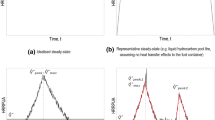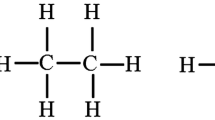Abstract
In the oil industry, many flammable products such as liquid hydrocarbons are usually stored in the atmospheric storage tanks. One type of these suitable tanks is the floating roof tanks. Among the floating roof tanks, external floating roof tanks are mainly used to store large quantities of petroleum products such as crude oil or condensate, gasoline, kerosene. The purpose of this study is prioritizing the causes of fire and explosion in the external floating roof tanks. In this study, firstly, the causes of fire and explosion of the external floating roof tanks were identified and then the obtained variables were scored by the process and safety specialists. In the next step, the causes were weighed and prioritized using the analytic network process method and Super Decisions software. The findings of the study identified 11 main criteria and 71 sub-criteria for fire and explosion of external floating roof tanks. Results revealed that several effective risk factors in the fire and explosion are natural disasters, static electricity, operational error, faulty firefighting system, maintenance error, piping rupture/leak, equipment/instrument failure, open flames, tank crack/rupture, runaway reactions, and sabotage, respectively. This study will help experts to identify the effective risk factors in fire and explosion in external floating roof tanks and their importance. Therefore, they can prioritize and implement the control measures to prevent fire and explosion incidents in external floating roof tanks.





Similar content being viewed by others
References
F. Centenoa, E.E.C. Rodrigues, Reduced-scale study of liquid fuel storage tank fire using fire dynamics simulator. Therm. Eng. 14(1), 40–46 (2015)
X. Fu et al., Application of compressed air foam system in extinguishing oil tank fire and middle layer effect. Procedia Eng. 45, 669–673 (2012)
K.R. Marianayagam, Numerical Simulation Study on Parameters related to Athabasca Bitumen Recovery with SAGD. Earth Sciences and Petroleum Engineering (Institutt for petroleumsteknologi og anvendt geofysikk, Norwegian University of Science and Technology, Trondheim, 2012), p. 57
H. Zhaoa, J.S. Liu, The feasibility study of extinguishing oil tank fire by using compressed air foam system. Procedia Eng. 135(1), 61–66 (2016)
E. Akyuz, Quantification of human error probability towards the gas inerting process on-board crude oil tankers. Saf. Sci. 80, 77–86 (2015)
Z. Nivolianitou, et al., A methodology for the hazard assessment in large hydrocarbon fuel tanks. Chem. Eng. Trans. 26, 171–176 (2012)
W. Wen-hea, X. Zhi-shenga, S. Bao-jiang, Numerical simulation of fire thermal radiation field for large crude oil tank exposed to pool fire. Procedia Eng. 52, 395–400 (2013)
S. Lin, P. Yi, Y. Shuangchun, The cause of fire and preventive measures in oil depot. Int. J. Eng. Res. Dev. 4(11), 55–57 (2012)
F. Zhang, H. Jiang, C. Zhang, Study of charging nitrogen to external floating roof tank to prevent rim-seal fires from lightning. Procedia Eng. 71, 124–129 (2014)
J. Guan et al., Experiment study of oil tank fire characteristics dependent on the opening of tank top. Procedia Eng. 62, 932–939 (2013)
C.D. Argyropoulos et al., Modelling pollutants dispersion and plume rise from large hydrocarbon tank fires in neutrally stratified atmosphere. Atmos. Environ. 44, 803–813 (2010)
C.H. Shelley, storage tank fires: is your department prepared? Fire Eng. 161(11), 63 (2008)
T. Ennis, Pressure relief considerations for low-pressure (atmospheric) storage tanks. Symp. Ser. 151, 1–13 (2006)
J. Taveau, Explosion of fixed roof atmospheric storage tanks, part 1: background and review of case histories. Process Saf. Prog. 30(4), 381–392 (2011)
A.M. Thyer, et al., A review of catastrophic failures of bulk liquid storage tanks. Loss Prev. Bull. 1(205), 3–11 (2009)
K. Mansour, Fires in Large Atmospheric Storage Tanks and Their Effect on Adjacent Tank (Loughborough University, Loughborough, 2012)
API, Evaporative Loss Measurement. in Manual of Petroleum Measurement Standards.Ch. 19, Sec. 2-E., Washington, DC: API (1997)
API, API Standard 650, Welded Steel Tanks for Oil Storage, tenth edition. Washington (1998)
A. Alaska, Fire Hazard Assessment for Valdez Crude Tank Internal Floating Roofs (Alyeska Pipeline Service Company, Alaska, 2004)
C.B. Ching, J.R. Lockwood, An Application Of Fire Science To An Industrial Incident Fire Safety Science Digital Archive (National University of Singapore, India, 1988)
K.S. Yeng, Design, Construction and Operation of the Floating Roof Tank. Course ENG 4111 and ENG 4112 Research Project (2009)
API, Evaporative Loss From External Floating Roof Tanks (American Petroleum Institute, Washington, 1989)
R. Park. VOC Emissions From Volatile Organic Liquid Storage Tanks-Background Information For Proposed Standards, EPA-450/3-81-003a. U. S. Environmental Protection Agency (1984)
D.O. Nwabueze, Liquid hydrocarbon storage tank fires—how prepared is your facility? Chem. Eng. Trans. 48, 301–306 (2016)
EPA, Alternative Control Techniques Document: Volatile Organic Liquid Storage in Floating and Fixed Roof Tanks (U.S. Environmental Protection Agency, Washington, 1994)
Manual Of Petroleum Measurement Standards: Chapter 19: Evaporative Loss Measurement, Evaporative Loss From Floating Roof Tanks. American Petroleum Institute, Washington, DC (1994)
R.L. Ferry, Estimating Storage Tank Emissions-Changes Are Coming (TGB Partnership, Hillsborough, 1994)
EPA, Benzene Emissions From Benzene Storage Tanks-Background Information For Proposed Standards. EPA-450/3-80-034a, U. S. Environmental Protection Agency, Research Triangle Park, NC (1980)
TICO, Storage tank. Turnkey project solution. Internal Floating Roof Tank VS External Floating Roof Tank, Which Is Better?. Concept of external floating roof tank.A complete solution for tanks. Floating Roof Tank. External Floating Roof Tank. BNH. Gas tanks. Tags: Floating Roof Tank. Manufacturer, Exporter, India, Cheap Cost
J.I. Changa, C.C. Lin, A study of storage tank accidents. J. Loss Prev. Process Ind. 19, 51–59 (2006)
H. Persson, A. Lönnermark, Tank Fires: Review of Fire Incidents 1951–2003 (SP Swedish National Testing and Research Institute, Borås, 2004)
A.A. Israel, Lightning protection of floating roof tanks. Am. J. Eng. Res. AJER 2(10), 11–21 (2013)
API, Verification of lightning protection requirements for above ground hydrocarbon storage tanks. API/EI Research Report (2009)
LASTFIRE, Review of Escalation Mechanisms (Resource Protection International, Buckinghamshire, 1997)
API, Interim Study-Prevention and Suppression of Fires in Large Aboveground Atmospheric Storage Tanks. API Publication 2021A (1998)
T. Saaty, Fundamentals of the analytic network process. in The fifth international symposium on the analytic hierarchy process ISAHP. August, Kobe, Japan. (12–14), p. 1–14 (1999)
W. Eddie, L. Heng, Application of ANP in process models: an example of strategic partnering. Build. Environ. 42, 278–287 (2007)
Ş. Gür, M. Hamurcu, T. Eren, Using analytic network process and goal programming methods for project selection in the public institution. Les Cahiers MECAS 13, 36–46 (2016)
T. Saaty, The Analytic Hierarchy Process (McGraw-Hill, New York, 1980)
T. Saaty, Decision Making with Dependence and Feedback: the Analytic Network Process (RWS Publications, Pittsburgh, 1996)
A. Jafarnezhad, E. Asgharizadeh, G. Asemian, Priority of technology transfer methods in oil drilling industry by using analysis network process (ANP). Int. J. Learn. Dev. 3(5), 15–25 (2013)
A. Valipour et al., Analytic network process (ANP) to risk assessment of gas refinery EPC projects in Iran. J. Appl. Sci. Res. 9(3), 1359–1365 (2013)
M. Moradi, A. Fatemi, H. Soltanpanah, The risk analysis of oil projects using fuzz ANP technique. Int. Res. J. Manag. Sci. 2(2), 55–61 (2014)
T. Saaty, The Analytic Hierarchy Process (AHP) for Decision Making and The Analytic Network Process (ANP) for Decision Making with Dependence and Feedback:Super Decisions (2003)
W. Atherton, J. Ash, Review Of Failures, Causes & Consequences In The Bulk Storage Industry (2007)
D. Sullivan, P. Curran, Static Ignition Hazards When Handling Petroleum Products (Fiberglass Tank & Pipe Institute, Houston, 2013), pp. 1–10
R. Alaimo, Handbook of Chemical Health and Safety (American Chemical Society, Washington, 2001)
LASTFIRE, Review of Escalation Mechanisms (Resource Protection International, Buckinghamshire, 2012)
EPA, Guidance document for the writing of standard operating procedures Taken from United States Environmental Protection Agency Guidance for Preparing Standard Operating Procedures (SOPs) EPA QA/G-6 (2007)
H. Duhon, SOPs That Operators Will Actually Want To Use: A Guide to Writing Effective SOPs (Society of Petroleum Engineers, 2015), p. 31
L. Xu-qing, L. Quan-zhen, G. Hong, Study of fire fighting system to extinguish full surface fire of large scale floating roof tanks. Procedia Eng. 11, 189–195 (2011)
Chemguard, Fixed or Semi-Fixed Fire Protection Systems for Storage Tanks. 204 S. 6th Ave • Mansfield, Tx 76063.www.chemguard.com (2005)
P. Okoh, S. Haugen, The influence of maintenance on some selected major accidents. Chem. Eng. Trans. 31, 493–498 (2013)
K.A. Mansour, Fires in large atmospheric storage tanks and their effect on adjacent tanks, pp. 22. Doctoral dissertation (2012)
OGP, Risk assessment data directory storage incident frequencies. Int. Assoc. Oil Gas Prod. 3(434), 7–18 (2010)
Wikipedia, External floating roof tank (2015)
CLG, Creating a Reliability Culture:CASE STUDY. CLG • 500 Cherrington Parkway. www.clg.com (2010)
B.V, M.O.a.G., Floating Roof sinking Failure report of Condensate Tank 5E-220-TB002A. Acting Production Eng. Coordinator (2014)
C. Lin, A safety study of oil tank farms. M.S. thesis. National Kaohsiung First University of Science and Technology, Kaohsiung,Taiwan, ROC (2003)
S. Li, Oil tank fire statistical analysis. Fire Control Theory Res. 4, 117 (2004)
Y. Yao, Oil tank fire mode and behavior of the fire. Nat Gas Oil 27, 20 (2006)
D.A. Greenwood, Differential settlement tolerance of cylindrical steel tanks for bulk liquid storage. Proceeding of the conference on settlement of structures. British geotechnical society, Cambridge, England (1974)
S. Gazioglu, J. Withiam, Evaluation of a Differentially Settled Tank. Missouri University of Science and Technology (Scholars’ Mine) (1984)
E2G, Pressure Relief Systems for Runaway Reactions. Engineers at E2G|The Equity Engineering Group, Inc. (2017)
PEAC, Runaway Industrial Chemical Reactions (2006)
Acknowledgment
The authors are grateful to Health Faculty of Tabriz University of Medical Sciences for funding this work under the master’s thesis (Project Reference: 5/D/35901). The authors are also grateful to experts of safety and process of refineries in Tabriz, Tehran, and to those who helped us collect the data.
Author information
Authors and Affiliations
Corresponding author
Rights and permissions
About this article
Cite this article
Moshashaei, P., Alizadeh, S.S., Jafarabadi, M.A. et al. Prioritizing the Causes of Fire and Explosion in the External Floating Roof Tanks. J Fail. Anal. and Preven. 18, 1587–1600 (2018). https://doi.org/10.1007/s11668-018-0556-8
Received:
Accepted:
Published:
Issue Date:
DOI: https://doi.org/10.1007/s11668-018-0556-8




